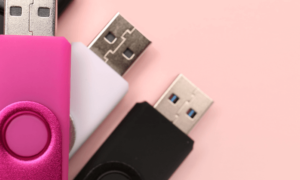The dining landscape has witnessed a significant transformation in recent years, with technology playing a pivotal role in reshaping the way we experience restaurants. One of the most noteworthy innovations in this realm is the use of custom QR codes to create a contactless dining experience.
QR Fox simplifies Custom QR Codes creation, offering a user-friendly platform for personalized QR codes. Elevate your branding, enhance engagement, and streamline information sharing with QR codes tailored to your specific needs.
This approach not only aligns with the current need for safety but also offers several advantages to both customers and restaurant owners. In this article, we will delve into the world of custom QR codes for restaurants and menus, exploring how they are revolutionizing the dining experience.
A Shift Towards Contactless Dining
The COVID-19 pandemic has accelerated the adoption of contactless solutions across various industries, and the restaurant business is no exception. To adapt to changing customer preferences and prioritize safety, many restaurants have turned to technology for solutions that minimize physical contact and enhance the dining experience. Custom QR codes have emerged as a powerful tool in this transformation.
What Are Custom QR Codes?
QR codes, short for Quick Response codes, have been around for some time. They are two-dimensional barcodes that can store a variety of information, such as text, URLs, contact details, and more. Custom QR codes, in this context, are QR codes that have been personalized and tailored to specific uses, such as restaurant menus and ordering systems.
Custom QR codes for restaurants typically link to digital menus, allowing diners to access them using their smartphones. These menus can be updated in real-time, ensuring that customers always have access to the most current information about dishes, prices, and specials. The ability to create and customize these QR codes to match a restaurant’s branding and aesthetics adds a unique touch to the dining experience.
The Benefits of Contactless Dining with Custom QR Codes
- Safety and Hygiene
One of the primary advantages of using custom QR codes in restaurants is the enhanced safety and hygiene they provide. In a post-pandemic world, diners are more conscious of minimizing physical contact with shared items like printed menus. By scanning a QR code with their smartphones, customers can access the menu without ever touching a physical menu, reducing the risk of transmission of pathogens.
- Convenience and Efficiency
Custom QR codes make the dining experience more convenient and efficient for both customers and restaurant staff. Diners can browse the menu, place orders, and even pay their bills using their smartphones. This reduces the time spent waiting for servers, which is especially valuable during peak hours.
- Real-Time Updates
Digital menus linked to custom QR codes can be updated in real time, allowing restaurants to make instant changes to their offerings, prices, or daily specials. This agility is beneficial for accommodating unforeseen circumstances, such as ingredient shortages or last-minute menu changes.
QR Fox can help you effortlessly create both Custom QR Codes and image QR codes, offering a user-friendly platform for your unique marketing and engagement needs. Elevate your branding and content delivery with QR Fox.
- Interactive Experience
Custom QR codes can be designed to provide more than just menu information. Restaurants can include links to videos, images, and additional details about the dishes, creating a more interactive and engaging dining experience. For example, a QR code can link to a video of the chef preparing a signature dish or provide information about the sourcing of ingredients.
- Cost-Effective Solution
Custom QR codes eliminate the need for printing and regularly updating physical menus, saving restaurants money in the long run. While there is an initial investment in setting up a digital menu system, the cost savings over time can be substantial.
How Contactless Dining with Custom QR Codes Works?
Implementing a contactless dining experience with custom QR codes is a straightforward process. Here are the general steps:
Create a Digital Menu: First, the restaurant needs to create a digital menu that includes all the relevant information about its dishes, including descriptions, prices, and high-quality images. This digital menu is then hosted on the restaurant’s website or a specialized platform.
Generate a Custom QR Code: Once the digital menu is ready, the restaurant can generate a custom QR code that links directly to the menu’s URL. This QR code can be customized to match the restaurant’s branding and aesthetics, creating a seamless experience for diners.
Place QR Codes in Strategic Locations: The next step is to strategically place QR codes within the restaurant. Common locations include tables, menus, and other visible areas. Diners simply scan the QR code with their smartphone camera, which will redirect them to the digital menu.
Order and Payment: After scanning the QR code, diners can browse the menu, select their dishes, and place orders through the same digital interface. Some systems even allow for online payment, reducing the need for in-person interactions.
Feedback and Reviews: Many custom QR code solutions also provide a feedback mechanism, allowing diners to leave reviews or provide comments directly through the digital menu interface. This feedback can be invaluable for improving the dining experience.
Success Stories of Custom QR Codes in Restaurants
Several restaurants and chains have successfully integrated custom QR codes into their operations. Let’s look at a few notable examples:
- Olive Garden
Olive Garden, a popular Italian restaurant chain in the United States, rolled out custom QR codes on its menus, allowing customers to access the full menu, nutrition information, and allergen details. This initiative not only enhanced the dining experience but also catered to diverse dietary needs.
- Wagamama
Wagamama, a UK-based restaurant chain, introduced QR codes that not only displayed the menu but also allowed customers to order and pay for their meals. The move was well-received, especially during the pandemic, as it minimized physical contact between staff and diners.
- Local Eateries
Small, local eateries and cafes have also embraced custom QR codes to offer unique and interactive experiences. Some have used QR codes to share the stories behind their dishes, provide links to social media accounts, or offer loyalty program information.
Overcoming Challenges
While custom QR codes for restaurants offer numerous benefits, there are some challenges to consider:
- Accessibility
Not all customers may have smartphones or be familiar with scanning QR codes. Restaurants need to be prepared to accommodate those who prefer traditional printed menus.
- Connectivity
A stable internet connection is essential for diners to access digital menus. Restaurants should ensure reliable Wi-Fi for a seamless experience.
- Digital Literacy
Some customers, particularly older individuals, may be less comfortable with digital technology. Staff should be trained to assist those who require help.
- Technical Issue.
Like any technology, custom QR code systems can encounter technical glitches. Restaurants should have a contingency plan in place for such situations.
The Future of Dining
Custom QR codes for restaurants and menus have revolutionized the dining experience by making it safer, more convenient, and engaging. As the hospitality industry continues to adapt to changing customer preferences and needs, we can expect further innovations and integrations of technology.
In the future, we may see augmented reality (AR) and virtual reality (VR) enhancements incorporated into dining experiences through custom QR codes. Imagine scanning a QR code on your table to view a 3D representation of the dish you’re about to order or to virtually explore the restaurant’s ambiance.
As technology continues to evolve, the line between the physical and digital dining experience will blur even further, offering new ways for restaurants to engage with customers and provide memorable experiences.
Conclusion
Custom QR codes for restaurants and menus represent a significant advancement in the hospitality industry, providing a safer, more efficient, and engaging dining experience. By embracing technology and creating a contactless dining environment, restaurants can cater to changing customer preferences and enhance their overall offerings. As the industry continues to evolve, we can anticipate even more exciting innovations that will further transform the way we dine out. Contactless dining is not just a trend; it’s the future of the restaurant industry.



































